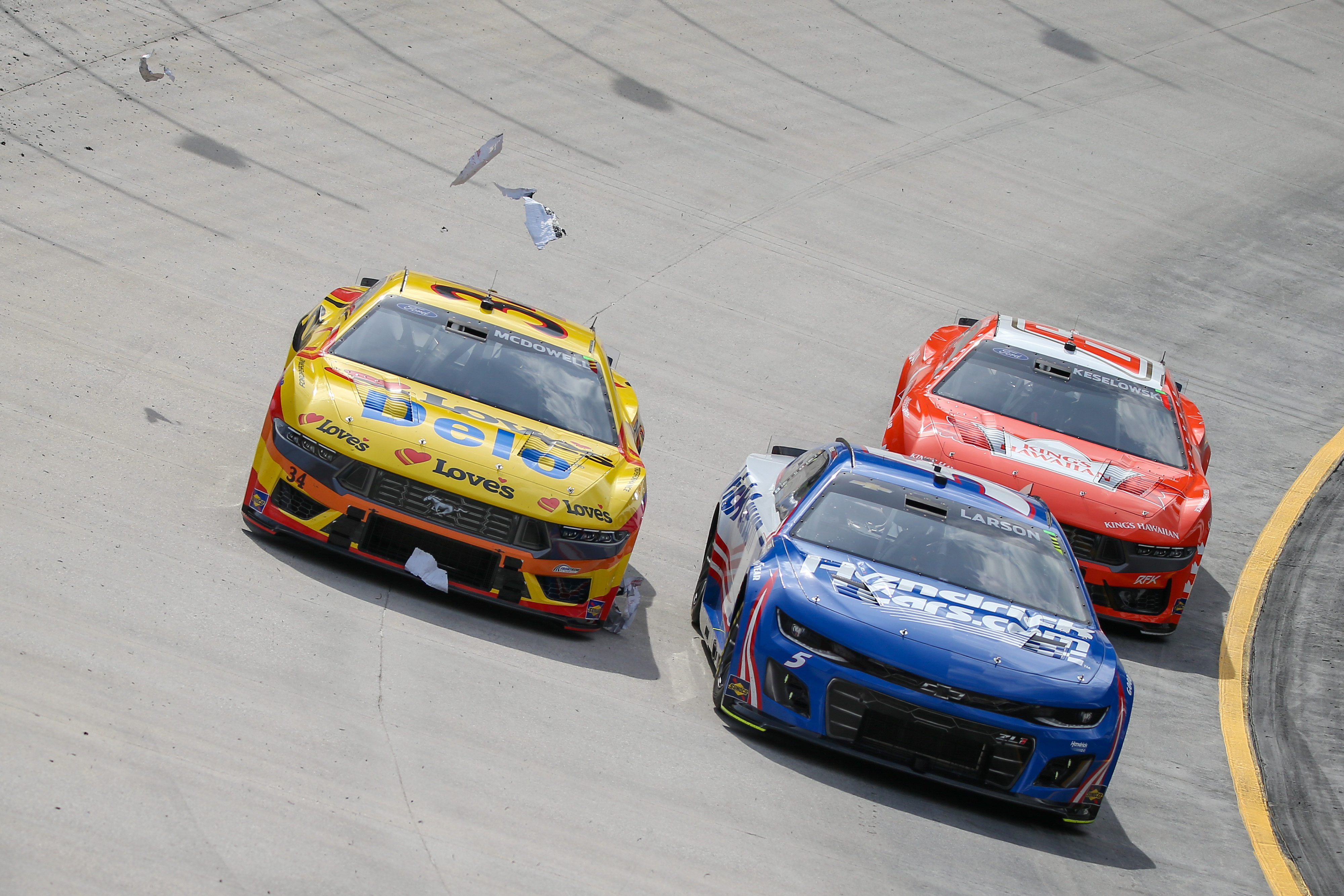Regardless of intent, what happened with tire degradation on Sunday in the Cup Series race at Bristol Motor Speedway is exactly the direction NASCAR wants to land with its short track racing product moving forward.
This comes at the same times as conversations over horsepower increases or tire contact patch changes.
What has been described as a happy little accident produced one of the best short track races of recent memory, a record 54 lead changes amongst a tied record of 16 different leaders, all resulting from extreme degradation that forced drivers off the throttle.
That the track never took rubber, which is what caused such tire wear, wasn’t the intent but NASCAR Senior Vice President of Competition Elton Sawyer says it’s an element that everyone in the sport is asking for from Goodyear.
“If you look at our racing in general, and we talk so much about or product at Daytona, Talladega and Atlanta; great racing and our intermediate package has been phenomenal, great racing, we’ve needed to work on the short tracks and road courses,” Sawyer said during a Wednesday morning appearance on SiriusXM NASCAR Radio.
“What we need to do is learn from what we just experienced this past weekend, bottle it up, and carry that to Martinsville and Richmond.
“It’s not easy. We didn’t walk into Bristol on Sunday morning having all this mapped out. It was a blessing in disguise to be able to experience that.”
The tire wear created so much passing because it was up to the drivers and their teams to figure out how much throttle to use. Some drivers drove to the front early and fell off late. Some drivers backed their pace up immediately and had more speed later in a run.
Unfortunately, the life of the tire was less than a fuel run but even the teams were getting their tires to last closer to 50 laps instead of 35 by the end of the race.
In a perfect world, that kind of falloff would happen at every short track and road course but not as abrupt. Sawyer explained how this is what drivers want.
“This is what they’ve asked for,” Sawyer said. “Is it a little extreme? Sure. Absolutely. I do believe if we ran the same race again today with the same tire, same conditions, and teams could make adjustments to their settings, caster and camber, the tire wear would be much better.
“I think they would get 60-75 laps on a set of tires. So, you start to digest all of that, and we will get an answer to move forward, but this is exactly what we need when we get to our short tracks.”
Before joining NASCAR, Sawyer was a driver with decades of experience behind the wheel that lends him credibility about why a race like that is what both drivers and the sanctioning body are looking for.
“It’s really, really difficult,” Sawyer said of tire conservation. “With younger drivers, and I’ll give Ty Gibb a lot of credit, had a great race car, but he was running a lot harder than he really beeded to and you could see Denny (Hamlin) and Martin (Truex) let him go because he will back up back to them.
“Racing like that is a discipline you learn over time. Yo don’t walk into the race track on Sunday and have that in your toolbox. It is challenging and it’s demanding, it’s something you gotta be disciplined to do. Darrell Waltrip was one of the best to ever be able to drive like at Bristol and here won there 12 times.”
Sawyer expects to test at Bristol with Goodyear to dial in the package for the annual Night Race in September but was adamant that he wants to see more prominent tire wear.
“I’m sure we’ll go back and do a validation test just to gather the data and see what we can learn from that,” Sawyer said. “I can’t commend them enough for their partnership, their openess and willingness to be aggressive with this.
“We were probably closer to the edge as we would want to be but that’s how we’re going to make this package better on short tracks, sometimes stepping over the edge and we got close, but didn’t get to the point where, yes they wore out, but were not just blowing out.”
Matt Weaver is a Motorsports Insider for Sportsnaut. Follow him on Twitter.

